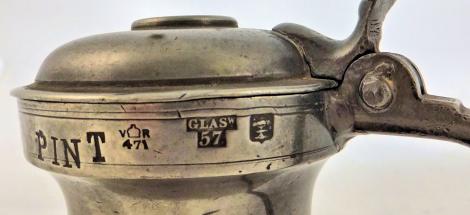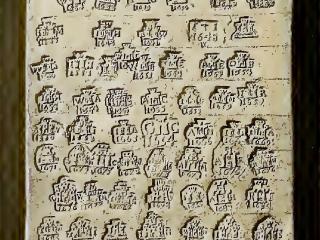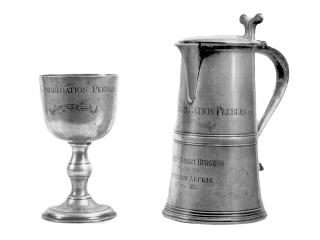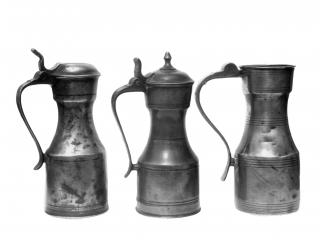Scottish Pewter

Pewter was an everyday commodity in Scotland from the beginning of the sixteenth to the end of the nineteenth century. It was widely used in the Church, in the home and in trade. However very little has survived, at least partly because old and damaged wares were not simply discarded, but were sold back to the pewterer to be recycled.
Craft guilds in Scotland were termed Incorporations, and the pewterers were members of the Incorporations of Hammermen. In Edinburgh the first pewterer to appear in the records became a Freeman in 1501. The craft grew in strength in line with demand for their wares, and statutes of the Council were required in order to regulate the quality of the metal that they used and also the capacity of their measures.
In 1562, they were directed to strike their marks on a slab of pewter (now referred to as a touchplate) on becoming a Freeman and Master, to affirm their conformity to the statutes. The two touchplates used by the Edinburgh pewterers over a 200 year period have survived and provide a complete record of their marks. These, together with other documentary sources, have enabled a complete list of the names and dates of all Edinburgh pewterers from 1501 to 1893 to be compiled.
Incorporations of Hammermen formed in many of the Scottish burghs, but the major centres were Edinburgh, Glasgow, Paisley, Inverness, Aberdeen, Dundee and Perth. It is likely that smaller burghs may not have had any pewterers working in them.
In the seventeenth century Scottish Church, pewter was used for communion bread plates and for wine cups, and basins for baptism.The eighteenth century saw an enormous expansion in the requirement for ecclesiastical pewter, often as a result of schisms and subsequent unions within the Presbyterian Church.Flagons began to be used for the communion wine, initially based upon designs originating with London pewterers who also competed with their Scottish counterparts, as trade increased following the Act of Union of 1707. New styles were introduced, and it is clear from the regional variations in style, that communion cups were then being made by pewterers in the provincial Royal Burghs as well as in the major centres.
Pewter measures were used extensively from the earliest years for the sale of wine, ale and other liquids. Those made in Edinburgh were of the eponymous ‘tappit hen’ form, which was based upon the style of hollow wares that were originally in use in France, a major exporter of wine to the port of Leith. Measures made in Aberdeen and Inverness was of a potbellied form, closely resembling the style of vessels made by their main trading partners in Holland.
Almost nothing from the seventeenth century has remained, but inventories, usually from the homes of the gentry, give some glimpse of the range of wares that were in use. What is unfortunately not clear, is how much of this was actually made in Scotland, since throughout the whole period of use of pewter, the country households continued their tradition of purchasing their wares from London.
The heyday of Scottish pewter was the seventeenth century, when Edinburgh supported more pewterers than at any other time. During the eighteenth century, demand began to decline as objects made from other materials, including pottery and porcelain, began to compete. However the death knell came in 1846 with the introduction of the Burgh Trading Act, which finally broke the monopolies on trade that had been exercised by the incorporations for some 200 to 300 years.
Courtesy of Peter Spencer Davies
For more information written by a former president of the society:
Scottish Pewter 1600-1850 by Peter Spencer Davies
ISBN 10: 1906566720 / ISBN 13: 9781906566722
Published by John Donald Short Run Press, 2014


